German anti-aircraft small-caliber anti-Soviet aircraft (part of 5)
The SS and Wehrmacht troops, in addition to 20-mm anti-aircraft guns made in Switzerland and Germany, had a significant number of captured installations, as well as 20-mm anti-aircraft guns, converted from aircraft guns. A typical example of the German anti-aircraft system created in the second half of the war was the construction of the installation, which used aviation 20-mm guns MG.151 / 20. it weapon with the automatics working on the recoil of the rolling barrel, which was firmly connected to the bolt during the shot, was created by the designers of the company Mauser Werke on the basis of the X.UMX-mm MG.15 / 151 aircraft machine gun. Due to the increase in caliber to 15-mm, not only the barrel, which has become shorter, but also the chamber, were changed. Also had to use a more powerful rear spring buffer, new tape receiver and sear.
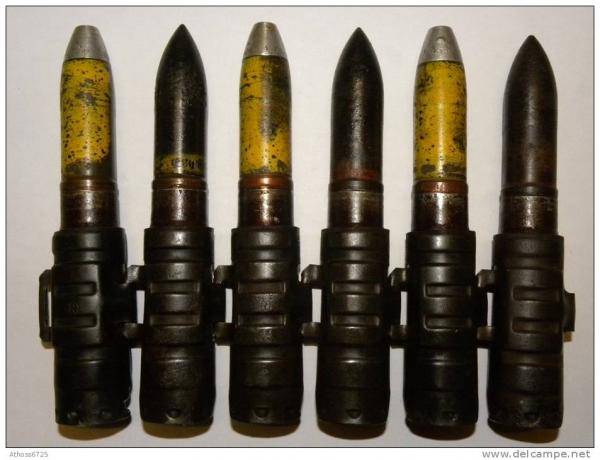
For shooting MG.151 / 20 was used ammunition 20x82 mm. Projectile weight: from 105 to 115 g. Initial speed: 700-750 m / s. In addition to the armor-piercing incendiary, armor-piercing incendiary tracer, fragmentation incendiary tracer, the high-explosive projectile containing 25 g of hexogen-based explosives was also included in the ammunition. When hit 20-mm high-explosive projectile in the armor Il-2 in most cases, it was breached. Hitting a high-explosive projectile in the keel or plane of the Soviet attack aircraft, as a rule, caused the destruction of these structural elements, which meant the termination of a controlled flight. The 151 / 20 cannon's ammunition when firing at air targets was originally supplied with cartridge belt, which contained only 20% armor-piercing shots: 2 high-explosive, 2 fragmentation-incendiary tracer, and 1 armor-piercing incendiary or armor-piercing tracer. However, towards the end of the war due to the lack of special projectiles, the proportion of cheaper armor-piercing tracer shells in the tape began to be 50%. An armor-piercing tracer at a distance of 300 m could penetrate 60 mm armor when hit at an angle of 12 °.
MG.151 / 20 produced in versions of the motor-gun, in synchronous and wing, as well as for use in the turret defensive installations. The mass of the gun was 42 kg, the rate of fire - 750 rds / min. The production of the MG.151 / 20 aircraft cannon began in 1940 and continued until the end of the war. It was widely used as the main armament of the Bf 109 and Fw 190 fighters of various modifications, as well as fighter-bombers, night fighters and attack aircraft, was installed in mechanized and manual turrets on bombers. In a non-mechanized turret version, the MG 151 / 20 gun was equipped with two handles with a trigger and a frame sight placed on the bracket.

In the first half of the 1944 of the year, there were about 7000 MG.151 / 20 cannons and more than 5 million shells for them in the Luftwaffe warehouses. The first MG.20 / 151 20-mm cannons adapted for anti-aircraft fire were turrets dismantled from damaged bombers. Such installations were used to provide air defense of field aerodromes. Turret MG.151 / 20 were mounted on improvised supports in the form of logs buried in the ground or pipes. Sometimes an armored shield was placed on an aircraft cannon used as an anti-aircraft gun.
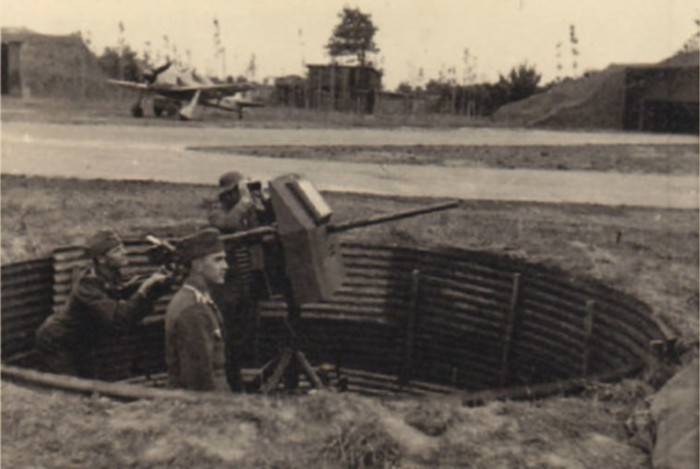
Hand-crafted MG.151 / 20 anti-aircraft gun on the outskirts of a German airfield
However, the synchronous and wing variants, which were part of the strike weapons of fighters and attack aircraft, could not be installed on anti-aircraft turrets without serious revision. Unclaimed 20-mm aircraft guns were reworked for ground use in weapons factories and large repair shops. Major changes were made to the recharge device and the trigger mechanism. The existing electric trigger systems and pneumatic recharging mechanisms were replaced with mechanical parts that ensure continuous fire when mounted on anti-aircraft installations. Judging by the specimens preserved in museum expositions and captured in photographs of the Second World War, several versions of single-barreled and twin anti-aircraft guns were created using MG.151 / 20 aircraft guns.
The most common anti-aircraft gun using the MG.20 / 151 20-mm guns was a horizontal installation mounted on a thumbs support known as 2,0 cm Flakdriling MG 151 / 20 or Fla.SL.151 / 3. The mass production of this installation began in the spring of the 1944 of the year, and it constructively and externally had much in common with the LSD in which 15-mm MG.151 / 15 machine guns were used.
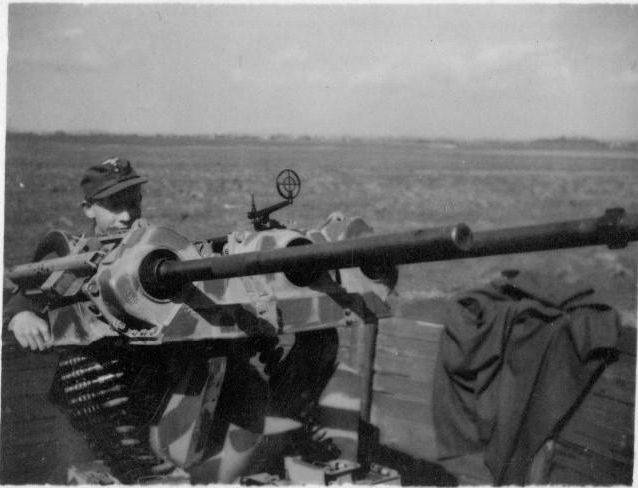
On the swivel stand below the cannons were mounted three shell drawers. In the front box fit tape with 400 shells, in the two side - on 250. This feature of storing ammunition was associated with the inconvenience of equipment front box in comparison with the side. Some anti-aircraft guns had flame arresters that lowered the muzzle flame, a blinding arrow.
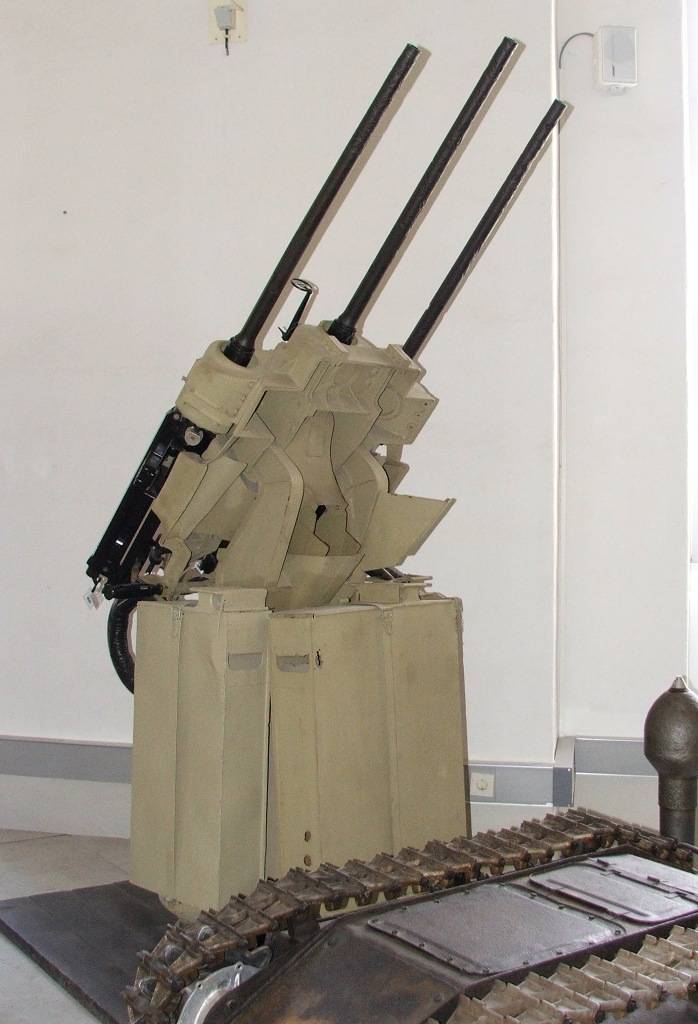
The targeting of a built installation to a target was not mechanized. The arrow, resting on the shoulder supports, had to make considerable efforts to pick up the gun, the mass of which with ammunition exceeded 200 kg. Although the designers tried to balance the guns in the horizontal plane, the angular velocity of the pickup was small, and the inertia during rotation on the bollard was very significant. However, an anti-aircraft gun with a firing rate of more than 2000 rds / min for airplanes flying at low altitude was a serious danger. The big plus of the “triceps” having tape power compared to the 20-mm quadruple MZA 2,0 cm Flakvierling 38 was the ability to fire in long bursts of longer duration. For this, only one shooter was required, while for servicing the quad set-up with magazine loading, a calculation of eight people was needed.
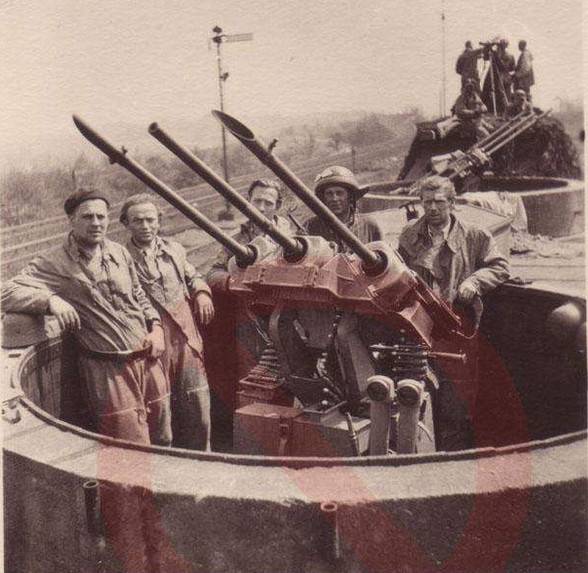
The exact number of built installations 2,0 cm Flakdriling MG 151 / 20 received by the troops is now impossible to install, but judging by the number of photographs where they are captured, these anti-aircraft guns were released a lot. Three-barreled 20-mm anti-aircraft guns were mounted both permanently for object anti-aircraft defense, and on various armor, auto and railway equipment, including armored anti-aircraft trains.
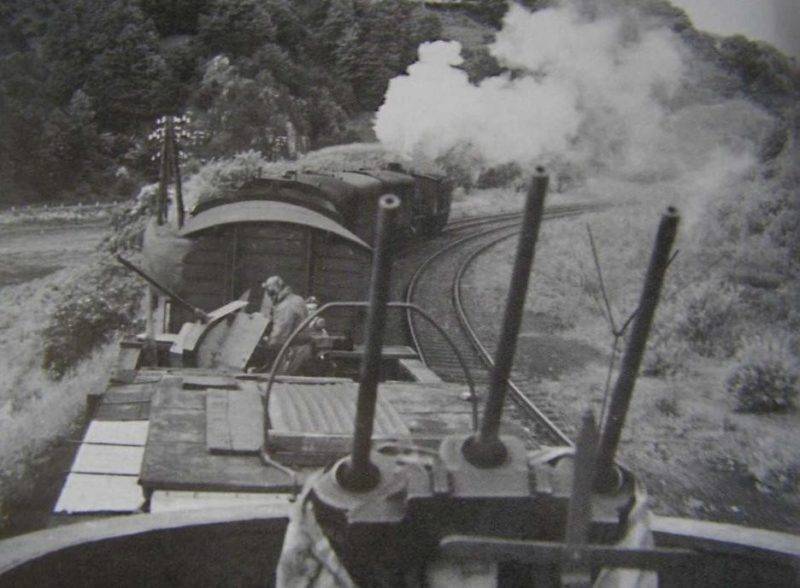
As an armored chassis for placing the 2,0 cm Flakdriling MG 151 / 20, the most used semi-tracked armored personnel carriers of the SdKfz 251 family. This machine was created in 1938 by Hanomag on the basis of an artillery tractor Sd Kfz 11, and was mass-produced until March 1945.
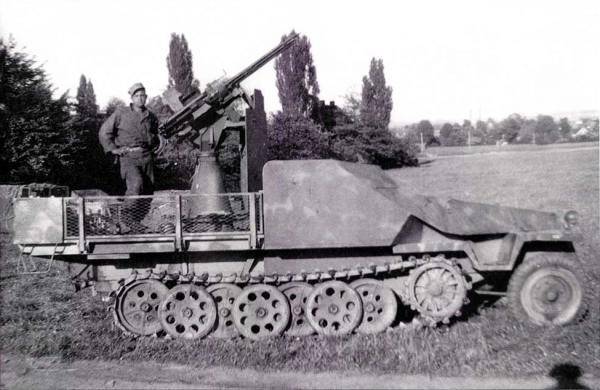
Built 20-mm anti-aircraft installation in the back of an armored personnel carrier, captured by US troops
Initially, anti-aircraft installations were placed on armored personnel carriers with an open rear platform. With a good overview, the shooter was protected from bullets and shrapnel only with an armored shield in front. From October 1944 to February 1945, the German industry managed to release approximately 150 ZSU Sd.Kfz.251 / 21 with built-in cannons. The crew of the open-top ZSU in a circle was covered with armor thickness from 8 to 14,5 mm. The gun mount itself was placed in an armored box.
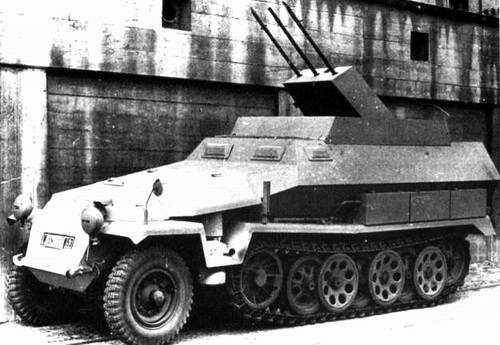
If necessary, the gunner had the opportunity to fire not only at air, but also at ground targets. According to US combat reports, Sd.Kfz.251 / 21 on the Western Front was very often used to support ground forces. From the combination of characteristics, the Sd.Kfz.251 / 21 anti-aircraft self-propelled units can be considered one of the most successful German samples on a semi-tracked chassis. This ZSU at a relatively low cost, and not bad indicators of mobility and maneuverability had acceptable firepower. However, the Germans did not have time to build many anti-aircraft self-propelled guns of this type. ZSU Sd.Kfz.251 / 21 appeared too late, and had no noticeable effect on the course of hostilities. Also in a number of sources it is mentioned that the storied 20-mm installations were mounted on the tri-axle reconnaissance armored vehicles M8 Greyhound captured from the Americans. However, it is unlikely that such ZSU managed to release a lot.
After the capitulation of Italy in September 1943, a significant part of the equipment and weapons of the Italian army was at the disposal of the Wehrmacht. In general, the Italian 20-mm anti-aircraft guns fully complied with the then requirements for small-caliber anti-aircraft guns and were therefore used in the German air defense units along with their own production units.
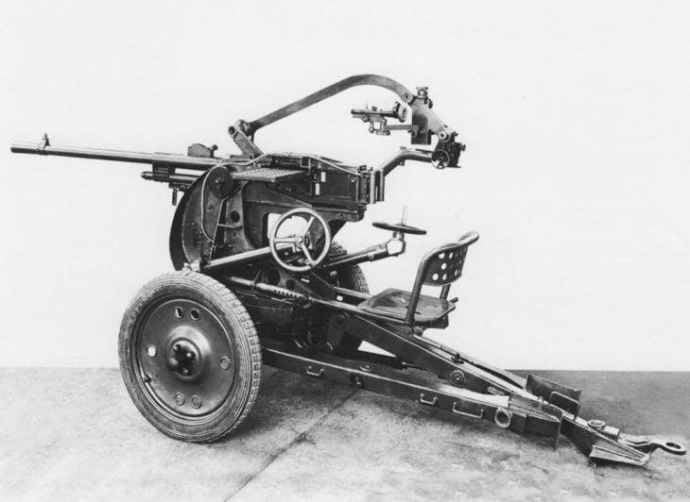
In the 1935 year within Cannone-Mitragliera da 13,2 / 1930 modello 20 known as requirements specification issued by the technical department of the Italian Ministry of Defense of the firm Breda Meccanica Bresciana based French 20-mm machine gun Hotchkiss Mle 65 create a universal 35-mm setting how Breda Modèle 35, in which used cartridge "Long Soloturn" - 20x138 mm. The same ammunition was used in German riflemen: 2,0 cm FlaK 30, 2,0 cm Flak 38 and 2,0 cm Flakvierling 38.
20-mm installation Breda Modèle 35 in the firing position in the position for anti-aircraft firing
In the Italian army, the 20-mm "Breda" was used as a light anti-tank and anti-aircraft gun. An armor-piercing projectile weighing 120 g, speeding up in a barrel of 1300 mm in length (65 gauges) to 840 speed m / s at a distance of 200 meters, could penetrate homogeneous armor at a right angle of 30 mm.
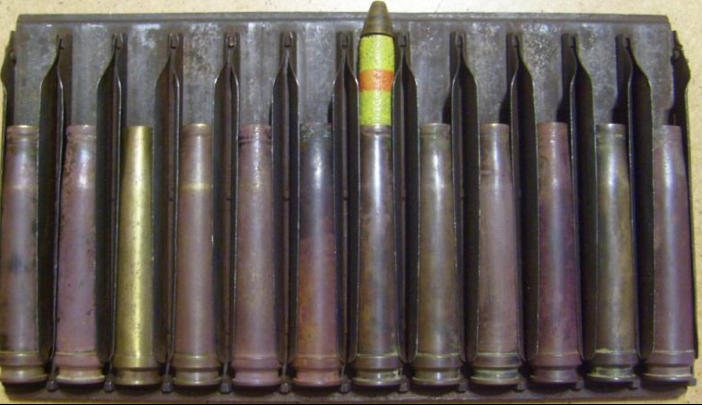
Meals, as in the French machine gun, came from a rigid clip-ribbon on 12 shells. The clip was fed from the left side, and as the cartridges were used up, it passed through the receiver, dropping to the right. Rate of fire - 500 rds / min. A well-trained calculation could develop a combat rate of fire to 150 rds / min. Installation weight - about 340 kg. Vertical pickup angles: -10 ° to + 80 °. When separating the wheel course, it was possible to fire in the 360 ° sector.
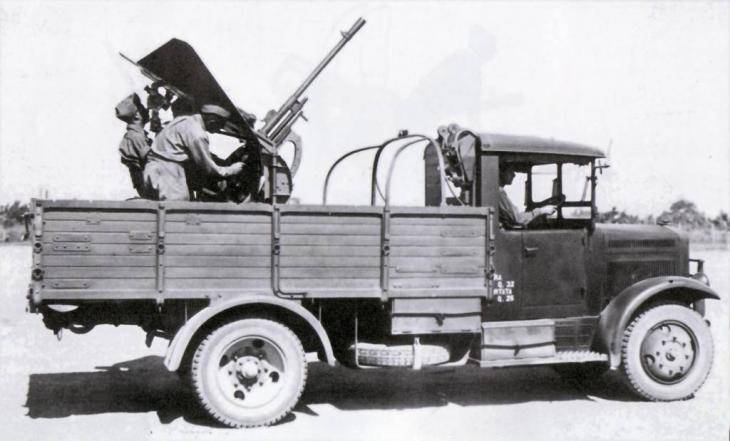
Universal installation of Breda Modèle 35 is widespread. As of September 1942, in the Italian armed forces there were about 3000 such installations. They were actively used in hostilities in North Africa and Sicily. Very often, Italian 20-mm anti-aircraft guns mounted on various vehicles. For the air defense and naval forces, more than 200 units were launched on the stationary rotary gun carriage. The same installation was subsequently placed on railway platforms.
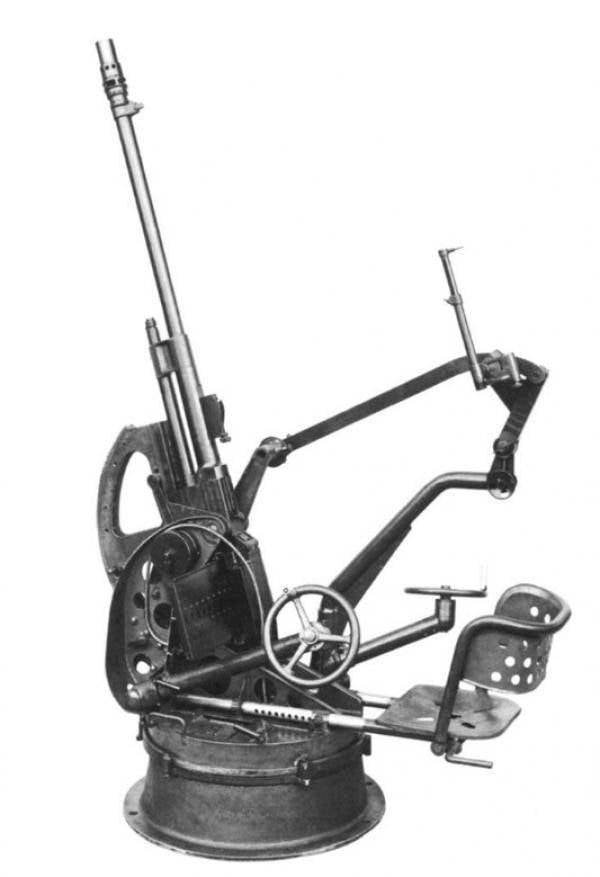
The Breda 20-mm submachine guns seized in Italy were used in the Wehrmacht under the designation Breda 2,0 cm FlaK-282 (i). The production of these anti-aircraft installations continued even after September 1943 in the northern territories of Italy controlled by the Germans; in total, the Nazis had at least 2000 of such anti-aircraft guns at their disposal. In addition to the armed forces of Nazi Germany, the Italian 20-mm MZA was actively used by the Finnish army.
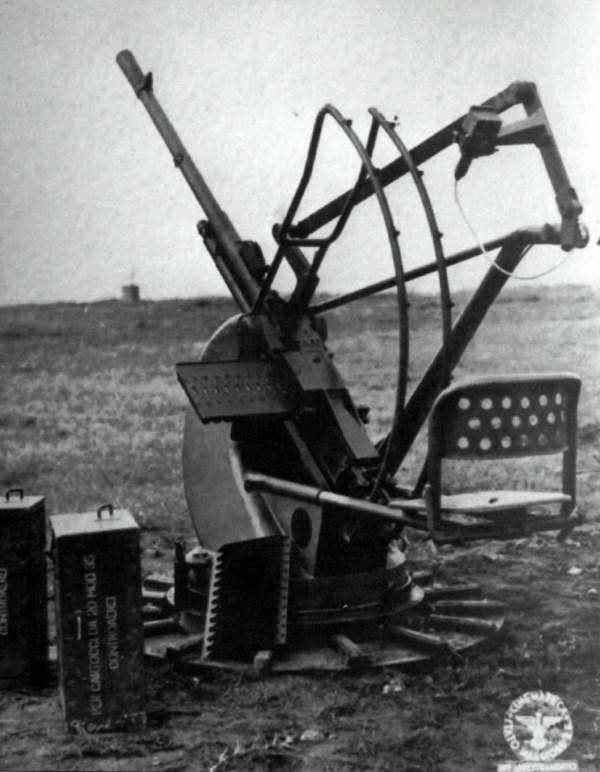
After the entry of Italy into the war, the army and navy faced an acute shortage of MZA. Adopted 20-mm submachine guns Breda Modèle 35 were produced in insufficient quantities. In view of this, it was decided to purchase an additional 20-mm Cannone-Mitragliera 20 / 77 20 cannons from Scotti for the Italian armed forces. This 1936-mm anti-aircraft gun was created jointly by Scotti and Isotta Fraschini with the assistance of the Swiss Oerlikon in 20. In the Italian Navy, this weapon was called the 70 mm / 1939 Scotti Mod. 1941 / XNUMX.
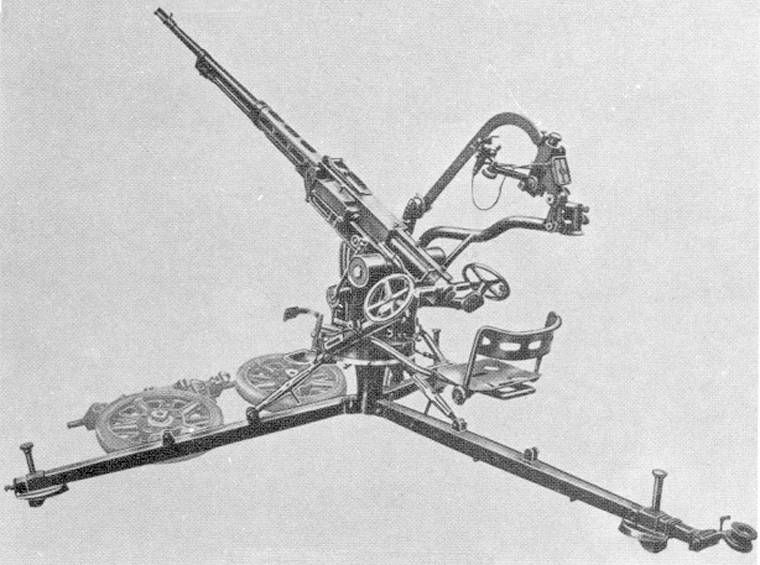
20-mm Cannone-Mitragliera da 20 / 77 automatic cannon on a universal wheeled-tripod machine
The weight of the installation on the wheeled-tripod machine in a combat position after the separation of the wheel travel was 285 kg. When installing the tripod on the ground there was the possibility of a circular attack. Angles vertically pickup: from -10 ° to + 85 °. Products of the Breda and Scotty firms fired identical ammunition, and according to their ballistic characteristics they were almost equal. The first version of the Scotty 20-mm anti-aircraft gun was charged with rigid ribbons on 12 cartridges. Later, there were options with 20-charging drum and with tape power. Installation with tape feed and box on 50 shells had a rate of fire of 600 rds / min and could produce up to 200 rds / min.
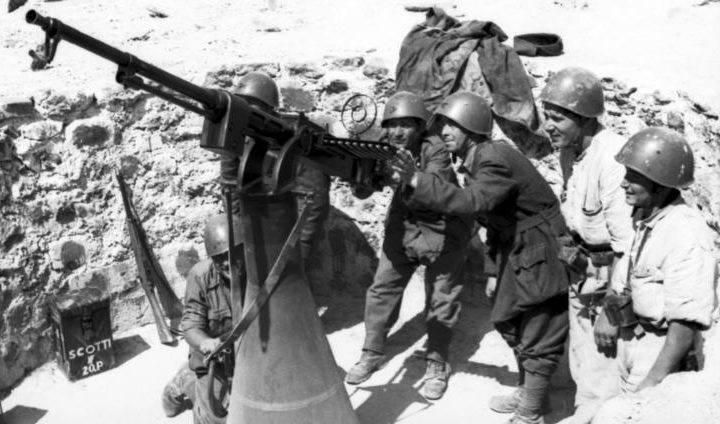
In addition to installations on the wheeled-tripod machine, a number of Skoti anti-aircraft guns were mounted on the bedside carriages. The gun on the thumbnail carriage was equipped with a balancing system, which allowed horizontal and vertical manual guidance without excessive physical effort.
In Milan, the Isotta Fraschini plant, which also produced expensive passenger cars, assembled more than 500 20-mm Scottie machines. The Italian army until September 1944 actively used them in hostilities. In the autumn of 1944, German troops captured about two hundred MNUs Cannone-Mitragliera da 20 / 77, and used them under the designation 2,0 cm Flak Scotti (i).
In addition to its own and Italian 20-mm anti-aircraft guns, the Germans had a significant number of samples taken in other countries. Among them, a very successful Danish 20-mm anti-aircraft installation M1935 Madsen on a universal machine with a detachable wheel travel stands alone.
20-mm installation M1935 Madsen on a universal wheeled-tripod machine in the exposition of the Beijing Military Museum
There was also a variant on a cruciform anti-aircraft gun with a wheel course. The small-caliber Danish gun chambered for the 20x120 caliber of mm, according to the principle of the automatic operation, was repeated by the Madsen rifle-caliber infantry machinegun with a short barrel stroke and swinging bolt. The air cooling barrel was supplied with a muzzle brake. Power was supplied from box magazines on 15 or drum shells on 30. The 20-mm automatic cannon on a universal machine, in the second half of the 30-s was popular with foreign buyers and was widely exported. The baptism of 20-mm installations M1935 Madsen took place during the Soviet-Finnish Winter War.
The anti-aircraft gun on the universal machine had a record low weight for its caliber, its weight in the combat position was only 278 kg. Rate of fire - 500 rds / min. Combat rate - up to 120, per minute Effective range of air targets - up to 1500 m. The ammunition consisted of shots with armor-piercing (154 g mass), armor-piercing tracer (146 g), fragmentation (127 g) projectile. According to the reference data, an armor-piercing projectile with an initial speed of 730 m / s, at a range of 500 m, could normally penetrate 28 mm armor.
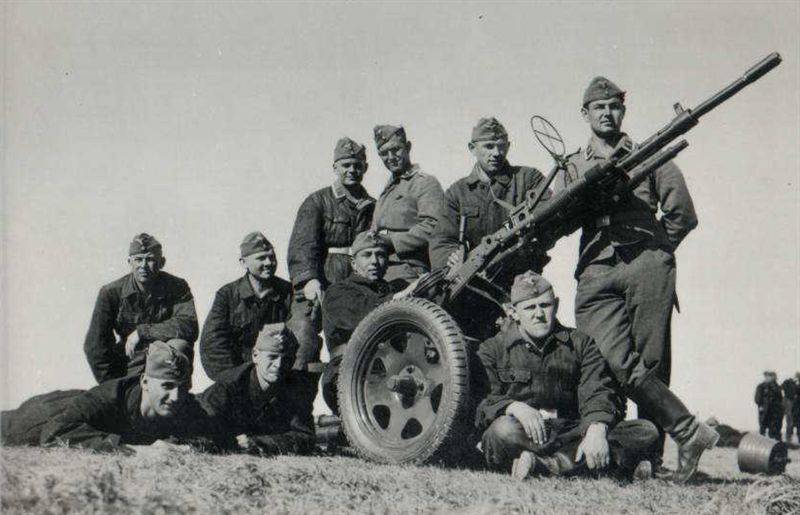
After the occupation of Denmark, Norway and the Netherlands, several hundred 20-mm Madsen anti-aircraft guns were at the disposal of the Hitlerites. The occupation authorities continued to manufacture anti-aircraft systems and ammunition for them at Danish enterprises. However, in order to save the Germans, they refused to manufacture quite complex universal wheel-tripod machines and installed M20 Madsen 1935-mm automatic rifles on swivels, which, in turn, were attached to the decks of warships, bases of various mobile platforms or on concreted fixed positions of the Atlantic Shaft . Initially, the 20-mm “Madsen” on the Eastern Front was used by the Hungarian and Romanian armies. However, after parts of the Red Army entered the territory of Germany, all German reserves were mobilized, and installations of Danish production with non-standard ammunition for the Wehrmacht began to be used against Soviet aviation.
To be continued ...
Based on:
http://alternathistory.com/neizvestnaya-mg-151-i-soputstvuyushhie-stvoly/
https://en.valka.cz/topic/view/14077/2-cm-MG-151-20-Fla-SL-151-Drilling
http://www.maquetland.com/article-phototheque/3120-cannone-mitragliera-scotti-isotta-fraschini-model
https://forum.axishistory.com/viewtopic.php?t=156167
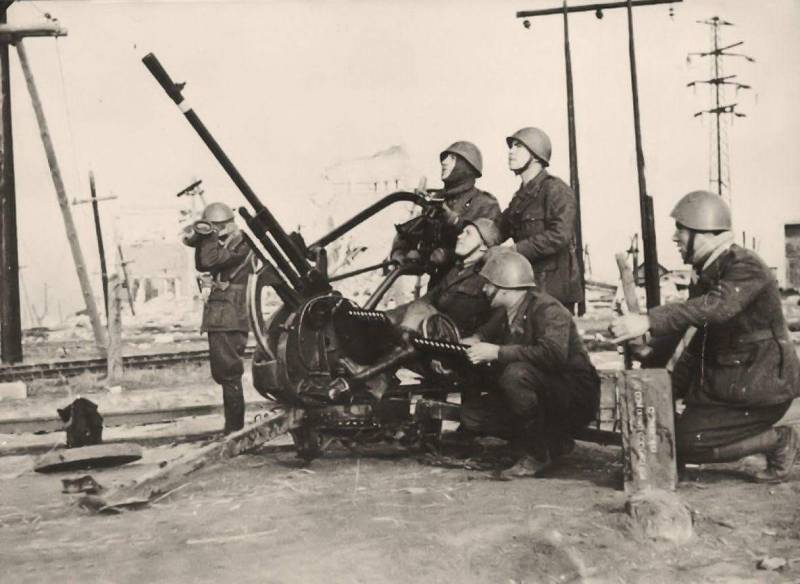
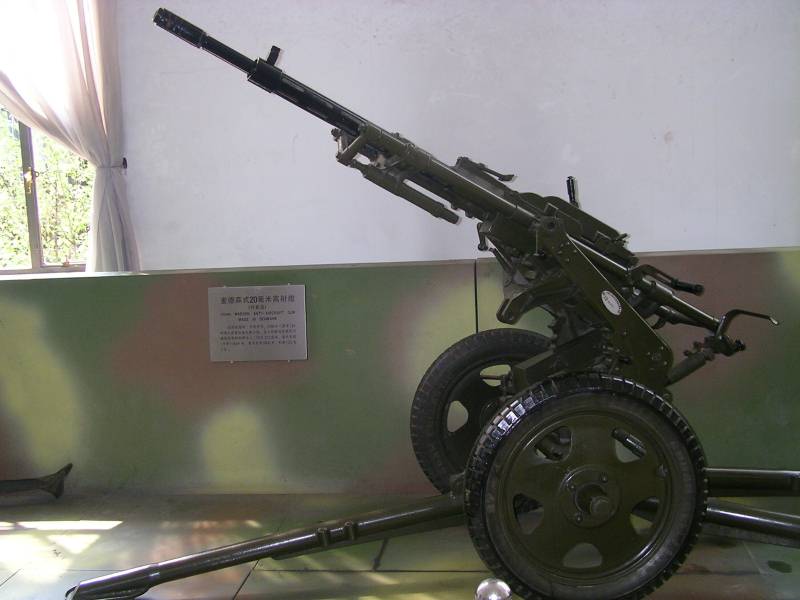
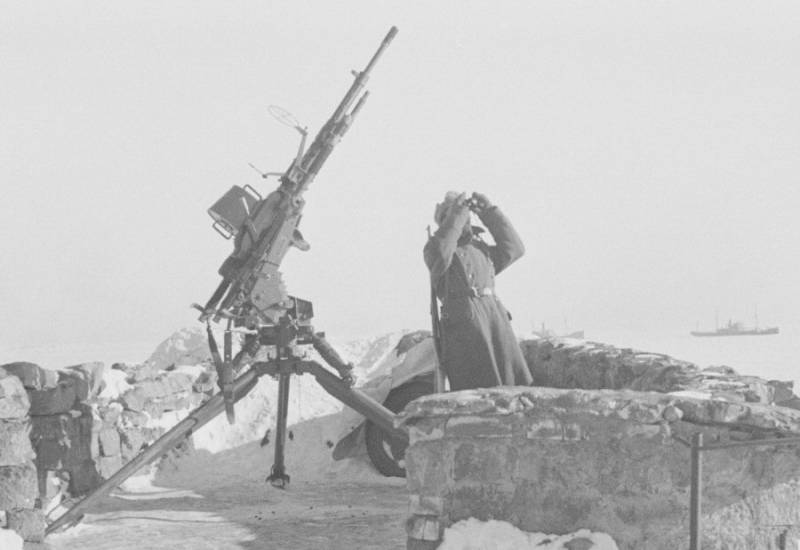
Information